15 Eco-Friendly Round Garden Ideas That Will Save the Planet (and Your Wallet!)
Round gardens combine beauty with functionality, and when designed sustainably, they can truly shine.
Imagine a vibrant space where the circular layout encourages easy accessibility and promotes biodiversity.
Creating a round garden not only brings a unique aesthetic to your outdoor space but also embraces eco-friendly practices that benefit the environment and your finances.
From innovative plant arrangements to sustainable materials, these 15 ideas will inspire you to cultivate a garden that is as kind to the Earth as it is to your wallet. Get ready to dig deep and plant some inspiration!
Contents
- 1. Circular Raised Garden Beds
- 2. Permaculture Designs
- 3. Circular Herb Garden
- 4. Wildlife-Friendly Garden Circles
- 5. Circular Fire Pit Garden
- 6. Vertical Round Gardens
- 7. Edible Landscaping Circles
- 8. Rock Gardens in Circles
- 9. Circular Composting Stations
- 10. Biodynamic Circular Gardens
- 11. Circular Zen Gardens
- 12. Circular Succulent Gardens
- 13. Circular Shade Gardens
- 14. Community Round Gardens
- 15. Circular Outdoor Classrooms
1. Circular Raised Garden Beds
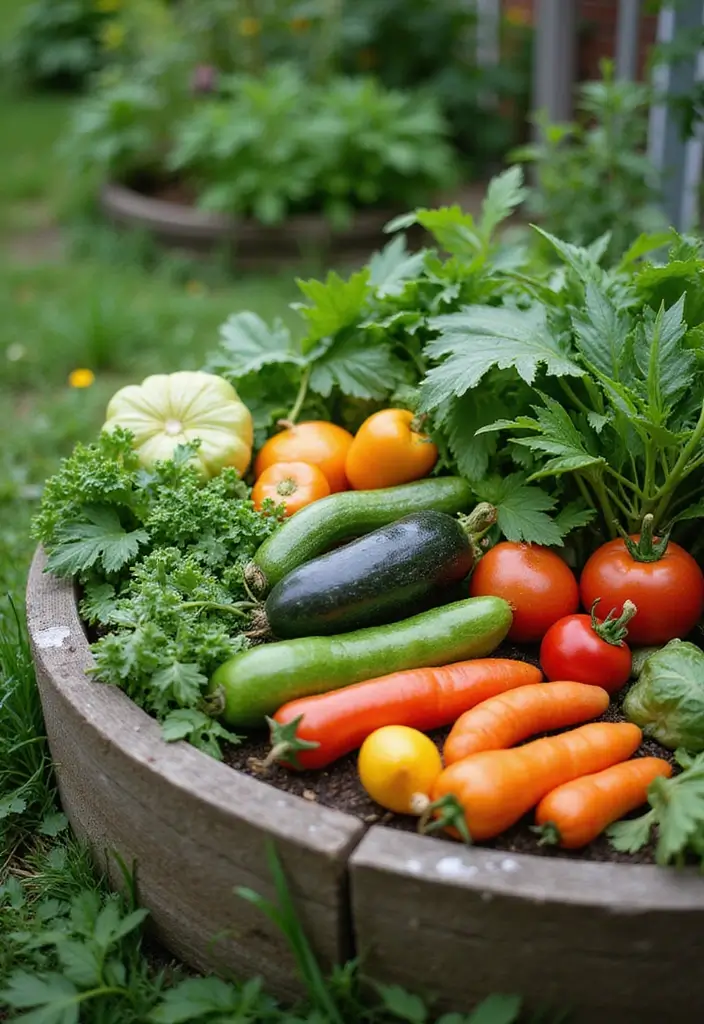
Transform your gardening experience with circular raised garden beds!
Not only do they look stunning, but they also offer excellent drainage and soil retention. Building a round garden bed from reclaimed wood or bricks helps minimize waste while creating a charming focal point in your backyard.
Benefits: They improve soil quality, deter pests, and are easier to maintain.
Consider planting companion plants like tomatoes and basil together in your circular bed, enhancing growth while adding beauty. Keep in mind that round layouts promote airflow, reducing humidity and the risk of disease.
For a DIY touch, personalize your bed with a natural, eco-friendly finish to blend it harmoniously into your landscape!
2. Permaculture Designs
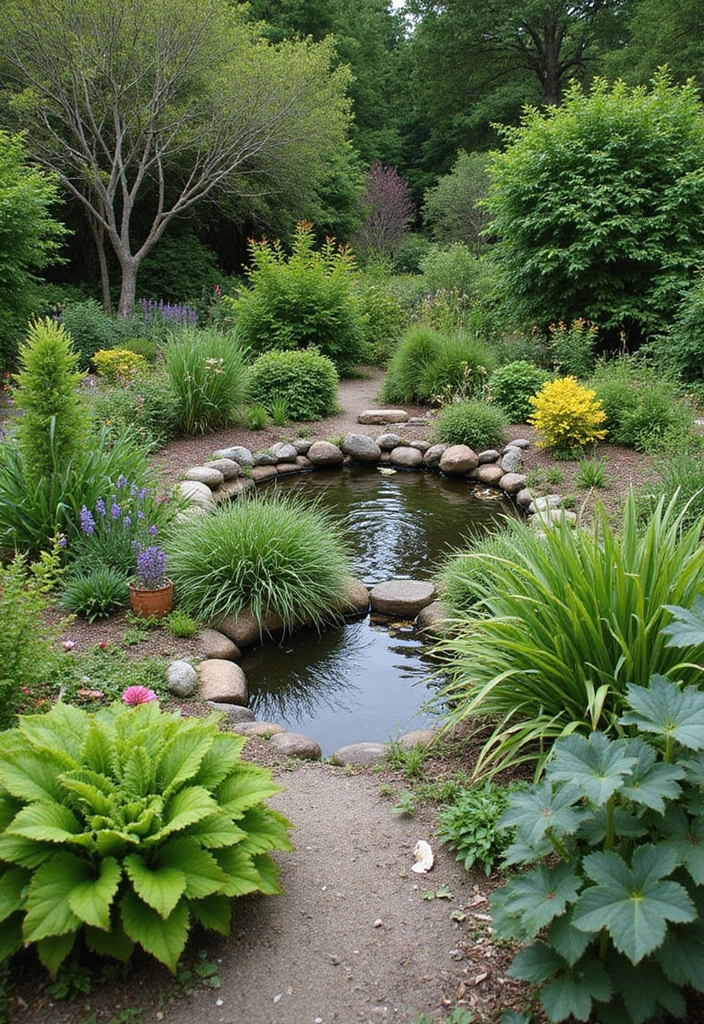
Permaculture is a fantastic approach to gardening that emphasizes sustainability and harmony with nature.
A round permaculture garden can create microclimates that support diverse plant life. By observing natural ecosystems, you can mimic their principles in your garden layout.
Key Features: Layers of plants from trees to ground covers provide food, shade, and nutrients. Use mulch to retain moisture and reduce weeds.
Consider incorporating water catchment systems or ponds in your round design to support wildlife. This creates a beautiful environment while ensuring you use resources wisely. The circular layout also allows for walking paths that encourage exploration and connection with the plants!
In a round permaculture garden, every layer tells a story – from trees to ground covers, they work together to nourish and sustain our planet. Let nature guide your garden design!
3. Circular Herb Garden
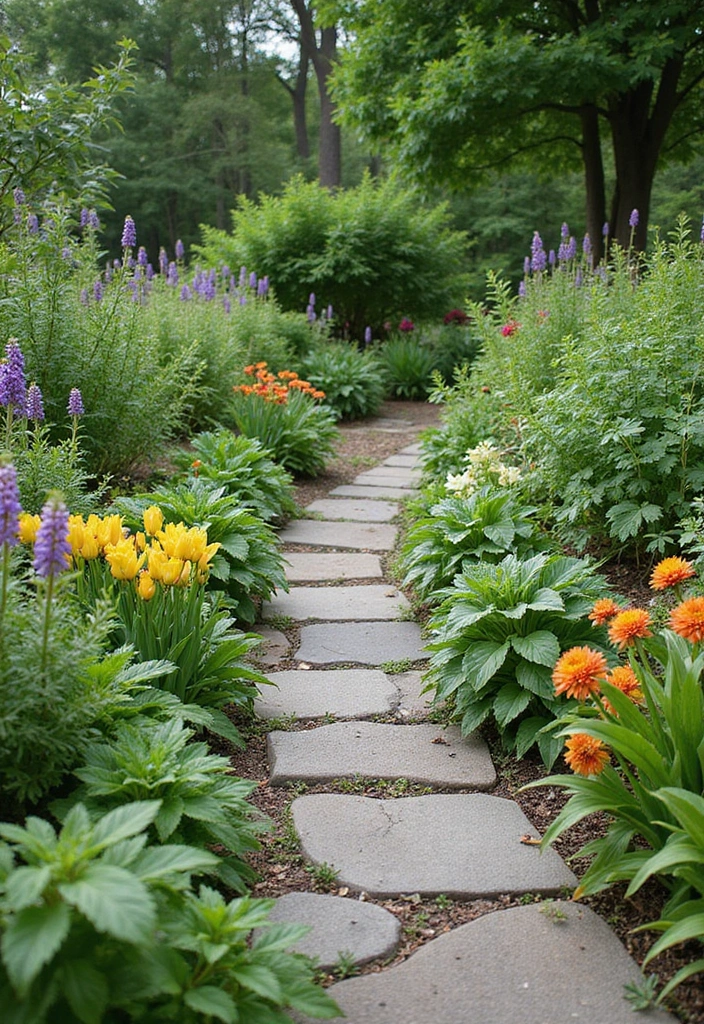
Herbs are not just practical; they can make a beautiful round garden too!
Design a circular herb garden with aromatic plants that are not only useful for cooking but also beneficial for pollinators.
Tip: Group herbs by their water and light needs for easier maintenance. For a stunning visual, plant taller herbs like rosemary in the center with shorter ones like thyme around the edges.
By using organic seeds and avoiding pesticides, your herb garden can thrive while contributing positively to the ecosystem. You could even add a small stone path to make harvesting easier. The result? A fragrant and inviting space that delights the senses!
A circular herb garden is a feast for the eyes and the taste buds! By grouping herbs by their needs, you’ll create a thriving ecosystem that’s as beautiful as it is practical. Embrace sustainability, one herb at a time!
4. Wildlife-Friendly Garden Circles
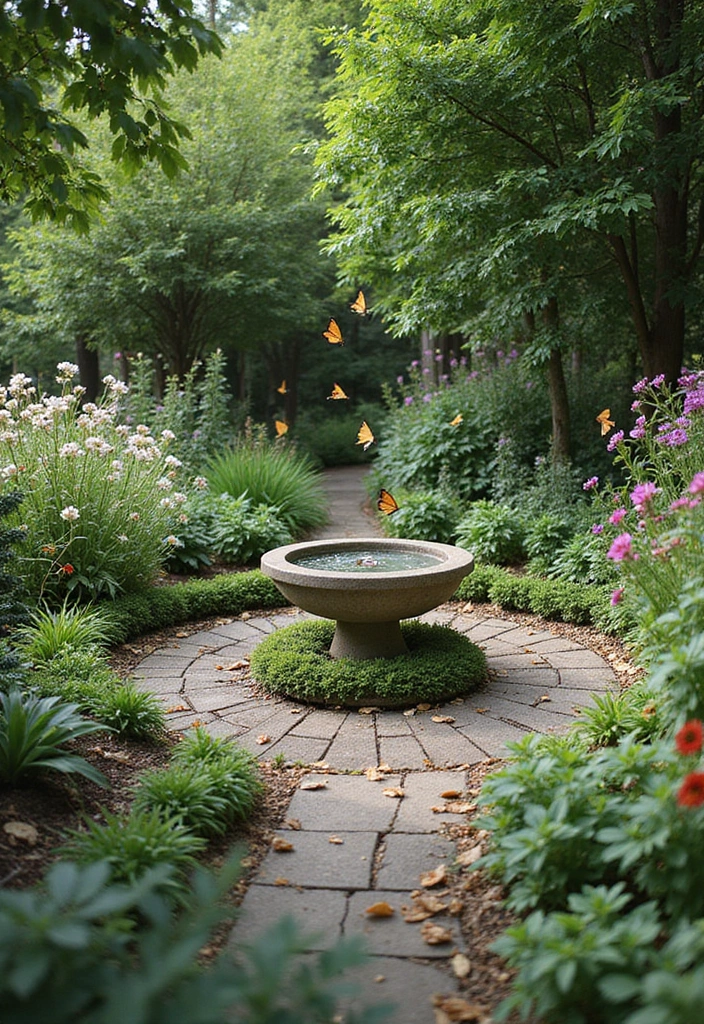
Create a wildlife-friendly round garden to invite nature into your backyard!
By using native plants, you can attract butterflies, bees, and birds, fostering a healthy ecosystem. Arrange your plants in a circular design to create habitats that encourage animal visits throughout your garden.
Consider: Adding a small water feature or birdbath in the center to provide hydration.
Use organic practices to ensure your garden is safe for wildlife. Additionally, incorporating logs or stones can provide shelter for various creatures. It’s not just a garden; it’s a sanctuary that promotes biodiversity and adds life to your outdoor space!
5. Circular Fire Pit Garden

Gather around a circular fire pit garden that combines relaxation with sustainability!
Create a cozy spot surrounded by circular seating and native plants that require less water and maintenance.
Design Idea: Use stones from your property to construct the fire pit, keeping costs low and natural.
Incorporate fragrant herbs or resilient flowers around the seating area to enhance the ambiance and attract pollinators. Lighting can be added with solar-powered lanterns to ensure an eco-friendly atmosphere in the evenings. This space can be a great place to enjoy nature while benefiting from the warmth of a fire, making it perfect for gatherings or quiet nights under the stars.
Gather ’round! A circular fire pit garden not only ignites warmth but also sparks sustainability. Embrace native plants and DIY charm to create a cozy retreat that’s easy on your wallet and the planet!
6. Vertical Round Gardens
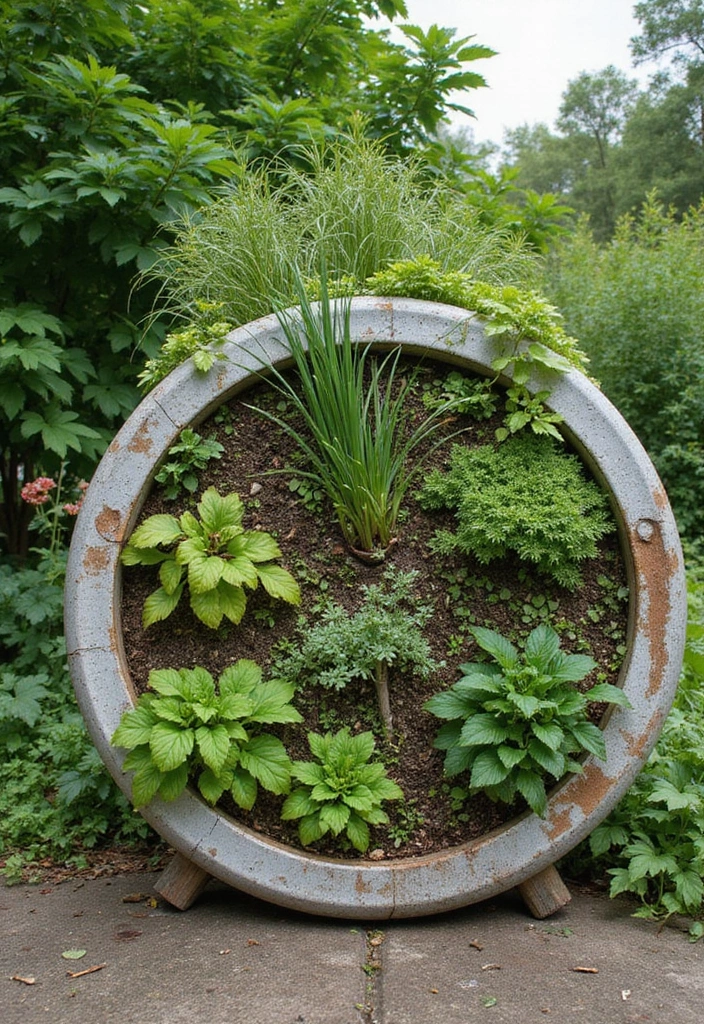
When space is tight, vertical round gardens are the answer!
These gardens utilize vertical space, allowing you to grow more plants in less ground area while maintaining an attractive design. Use upcycled materials like pallets or crates to create vertical structures that fit seamlessly into a round space.
Benefits: They maximize sunlight exposure and minimize soil erosion.
Consider a circular configuration with taller plants at the back and trailing varieties cascading down the front. This arrangement also facilitates easier access for harvesting and maintenance. Pair your vertical garden with pathways made from natural stones for a charming rustic feel!
7. Edible Landscaping Circles
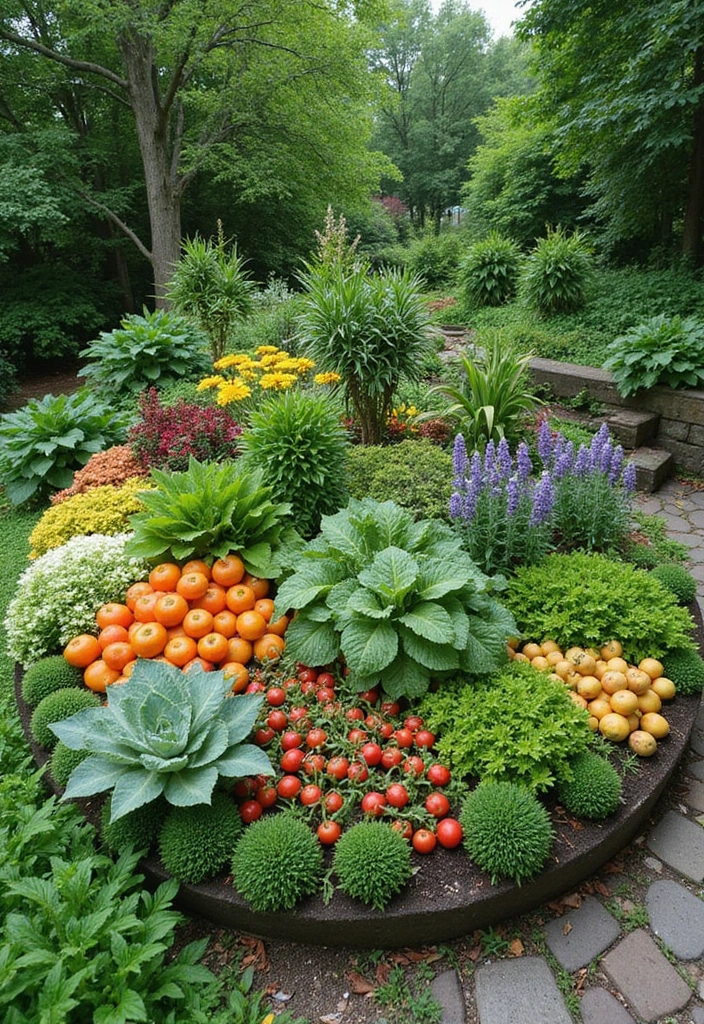
Who says gardens can’t be beautiful and functional? Try edible landscaping in a round design!
Incorporate fruits, vegetables, and herbs into your landscape organically.
Plan: Mix ornamental and edible plants to create visual interest while ensuring your garden is productive. Circular layouts provide the perfect opportunity to make a statement.
For instance, plant strawberries along the border, with flowering herbs like chives and cilantro at the center. This setup promotes diversity and can even reduce pests naturally. An edible garden not only saves you money but also provides fresh ingredients for your kitchen!
8. Rock Gardens in Circles
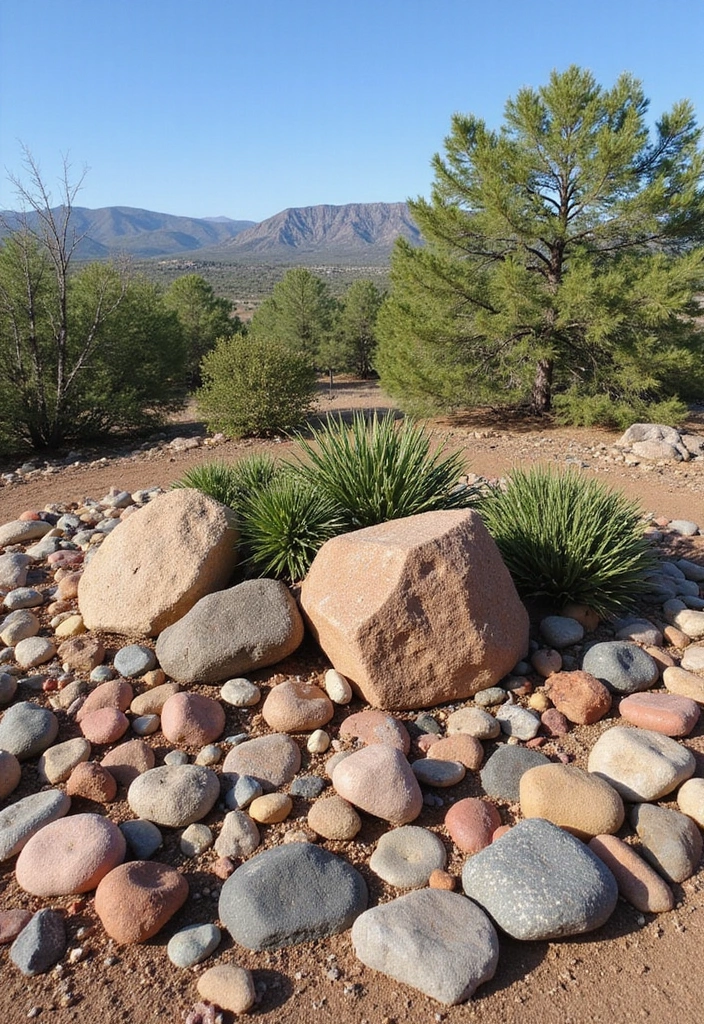
Rock gardens can bring a unique charm to your landscape when designed in a circular layout.
These gardens feature drought-resistant plants nestled among stones, making them both beautiful and sustainable. Use locally sourced rocks to keep costs down and landscape your garden naturally.
Tip: Select plants native to your region that thrive in rocky conditions, which helps conserve water and encourage local wildlife.
Circular arrangements allow you to create visually appealing layers with different heights. As a bonus, rock gardens require minimal maintenance, making them a practical choice for busy gardeners!
Create a stunning circular rock garden with native plants! Not only do they save water, but they also attract local wildlife, making your garden a thriving ecosystem.
9. Circular Composting Stations
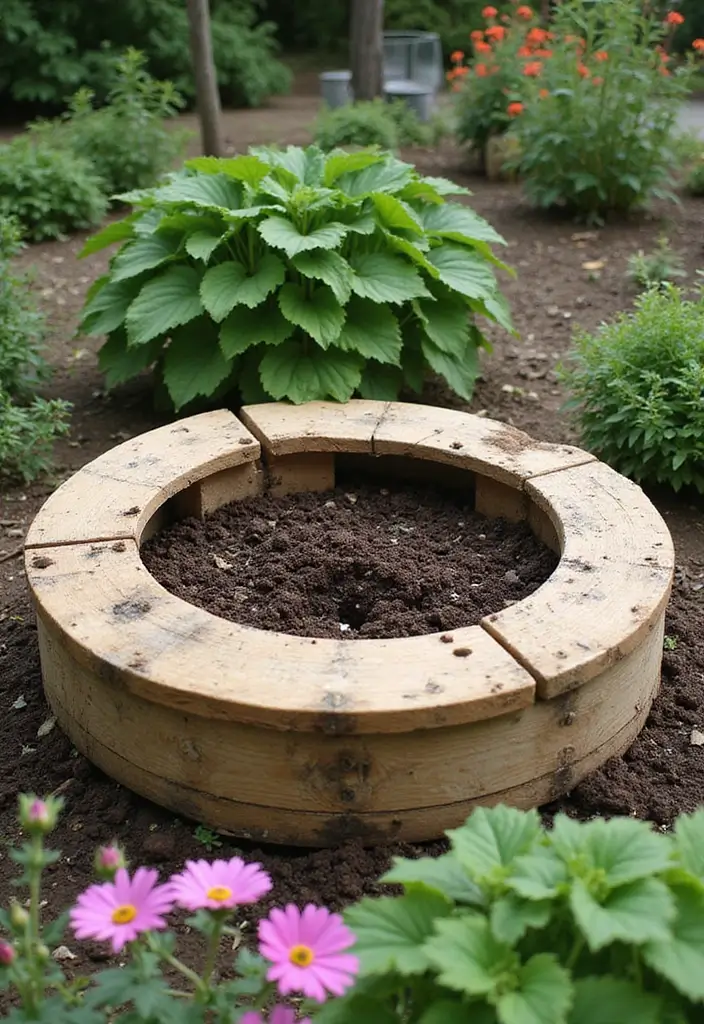
Circular composting stations are a fantastic way to practice sustainability while contributing to your garden’s health.
With a round design, these stations are not only efficient but also aesthetically pleasing within your garden layout. Start by using pallets or chicken wire to create a circular enclosure that keeps your compost contained.
Benefits: They can be easily rotated, promoting decomposition and providing nutrient-rich soil for your plants. Regular turning and the addition of kitchen scraps and yard waste will rapidly improve the compost quality. Incorporate a small herb garden nearby to use your compost and see the benefits firsthand!
10. Biodynamic Circular Gardens
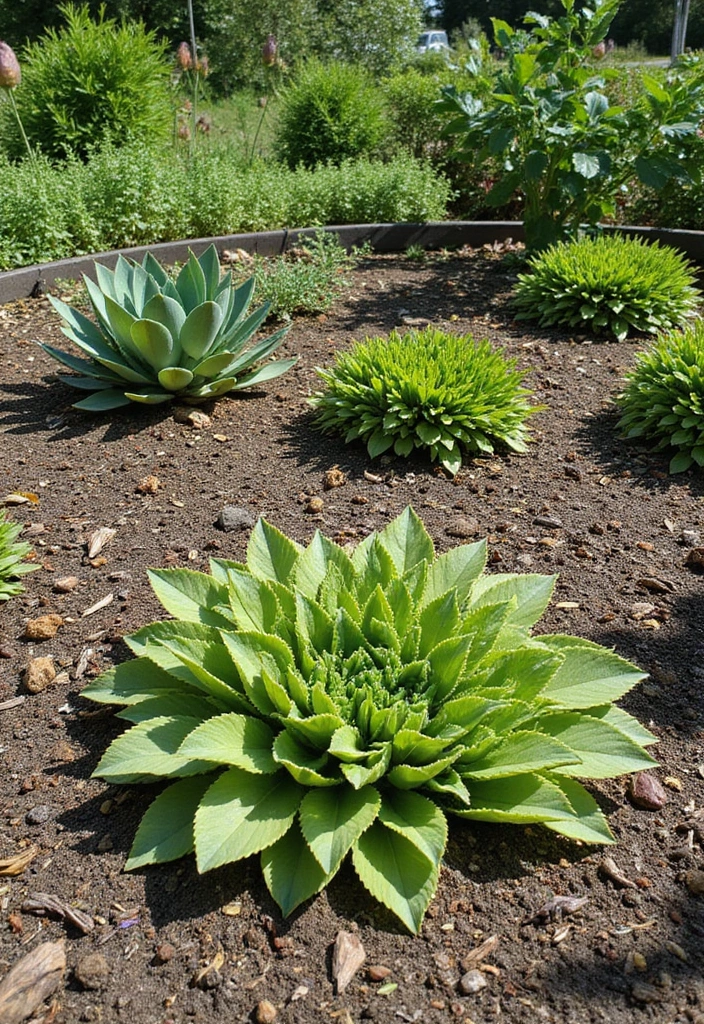
Biodynamic gardening takes eco-friendly practices to the next level by harmonizing with nature’s rhythms.
In a circular garden design, you can incorporate plant families, composting, and cover crops that support soil health and biodiversity.
Strategy: Use a circular layout to encourage rotation and diversity. Crop rotation prevents disease and enhances fertility naturally.
You can also time your planting according to lunar cycles for optimal growth. Monitor your soil health and observe the wildlife interactions, ensuring a thriving ecosystem right in your yard. Elevate your gardening experience with biodynamics, and watch your circular garden flourish!
11. Circular Zen Gardens
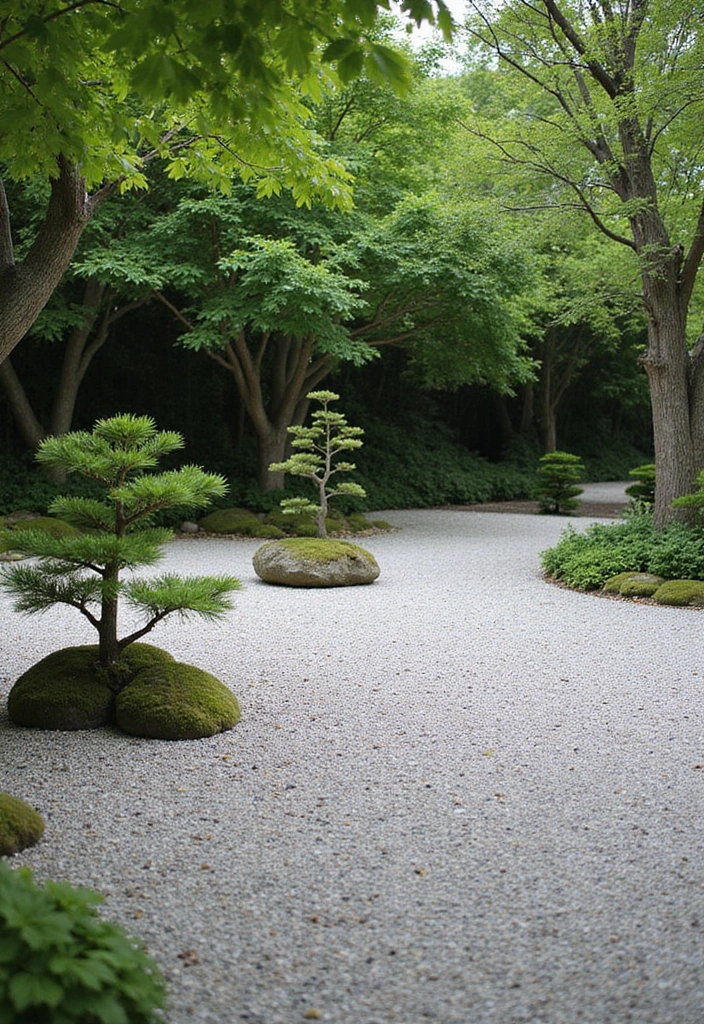
Bring peace and tranquility to your outdoor space with a circular Zen garden!
These gardens are designed not only for visual beauty but also for meditation and reflection. Use raked gravel, stones, and carefully placed plants to create a serene environment that invites calm.
Elements: Incorporate rounded stones and smooth pebbles for texture, and consider adding a small water feature for soothing sounds. Ensure your plant choices are low-maintenance and drought-resistant to keep your Zen space peaceful without a lot of fuss. This type of garden can serve as your private retreat, a place to unwind and recharge.
12. Circular Succulent Gardens
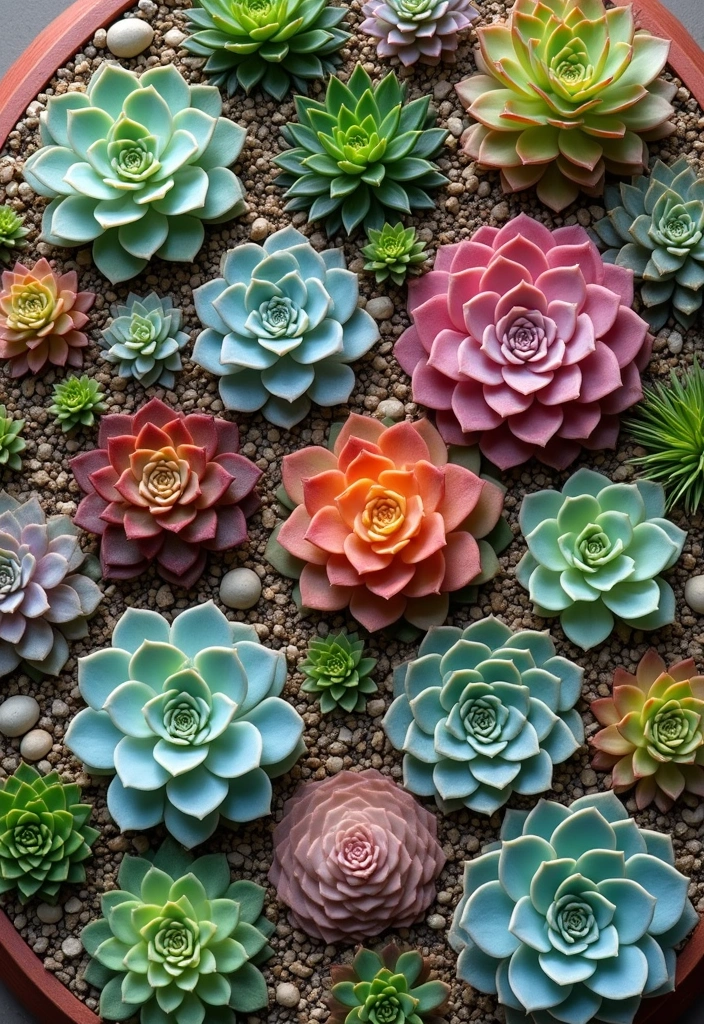
Succulents provide a vibrant splash of color and texture to any garden, especially in a round layout!
These drought-resistant plants are perfect for sustainable gardening, requiring minimal water and maintenance. Create a circular succulent garden using an array of colors, shapes, and sizes for visual impact.
Design Tip: Use a mix of vertical and horizontal growing succulents to create depth. Arrange larger plants in the center and smaller ones around the edges for a tiered effect. They can thrive in pots or directly in the ground, making them versatile for any setting. A circular succulent garden is not only low-maintenance but adds a unique aesthetic charm to your outdoor space!
13. Circular Shade Gardens
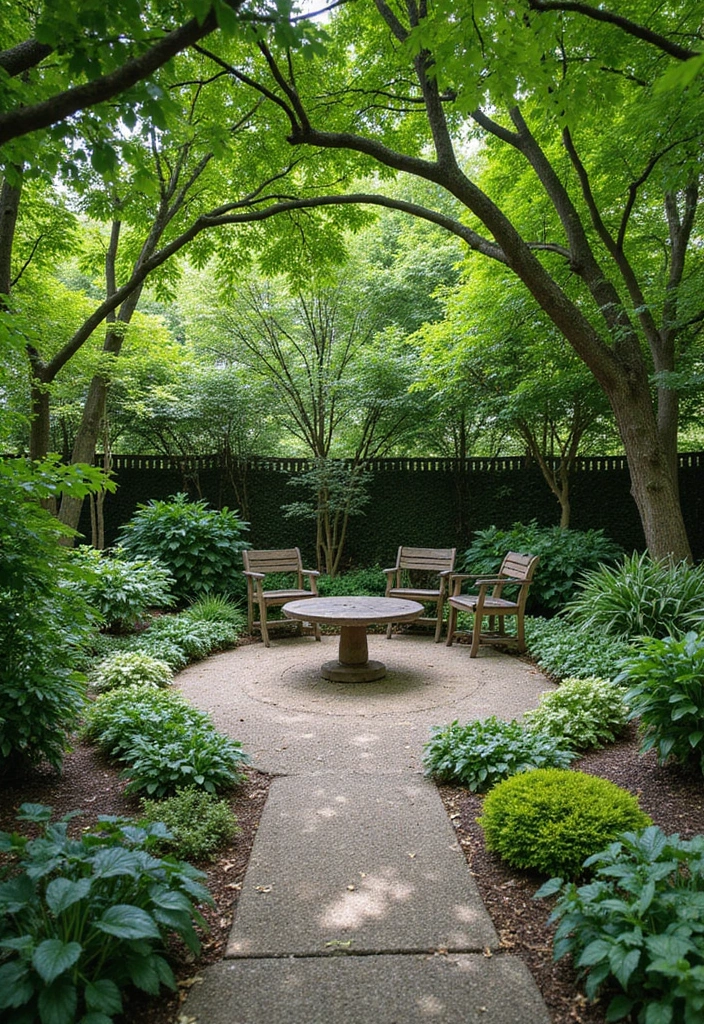
Transform that shady corner of your yard into a stunning circular shade garden!
Selecting shade-tolerant plants and arranging them in a round design can create an enchanting retreat. Use diverse foliage and colors to add interest, while incorporating paths to avoid trampling plants.
Consider: Plants like ferns, hostas, and astilbes can thrive in your shade garden, adding layers of beauty and texture. Circular designs allow for easy access while creating a focal point that draws the eye. Add a bench or seating to make a peaceful spot to enjoy nature’s quiet wonders. Shade gardens can be equally stunning and sustainable, promoting biodiversity with the right planning.
14. Community Round Gardens

Bring your neighborhood together with a community round garden!
These gardens serve as a fantastic space for collaboration, education, and sustainable gardening practices. Involve local residents in the design and cultivation process to foster a sense of ownership and community spirit.
Benefits: A circular layout encourages collaboration and accessibility, making it easy for everyone to participate in planting, harvesting, and maintenance. Use recycled materials for raised beds, and emphasize the importance of organic gardening. By growing food together, you can strengthen community bonds and increase awareness of local sustainability practices!
15. Circular Outdoor Classrooms
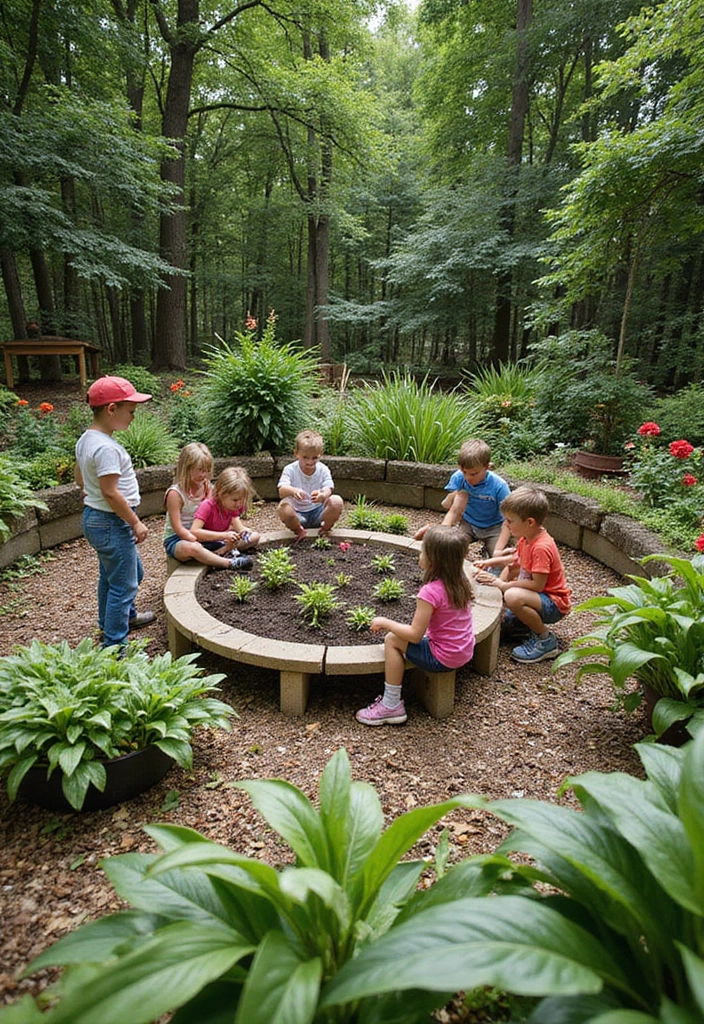
Why not turn your garden into an outdoor classroom?
Circular outdoor classrooms can offer hands-on learning experiences about sustainable gardening practices for children and adults. Create a space with seating arranged in a circle, surrounded by plants and natural elements.
Activities: Host workshops on composting, planting, and ecology, using the circular design to promote inclusivity. A variety of plants can be included to demonstrate biodiversity, pollination, and growth cycles. This not only fosters learning but also instills a sense of stewardship for the environment among participants. An outdoor classroom can bring education to life in a way that’s both engaging and impactful!
Conclusion
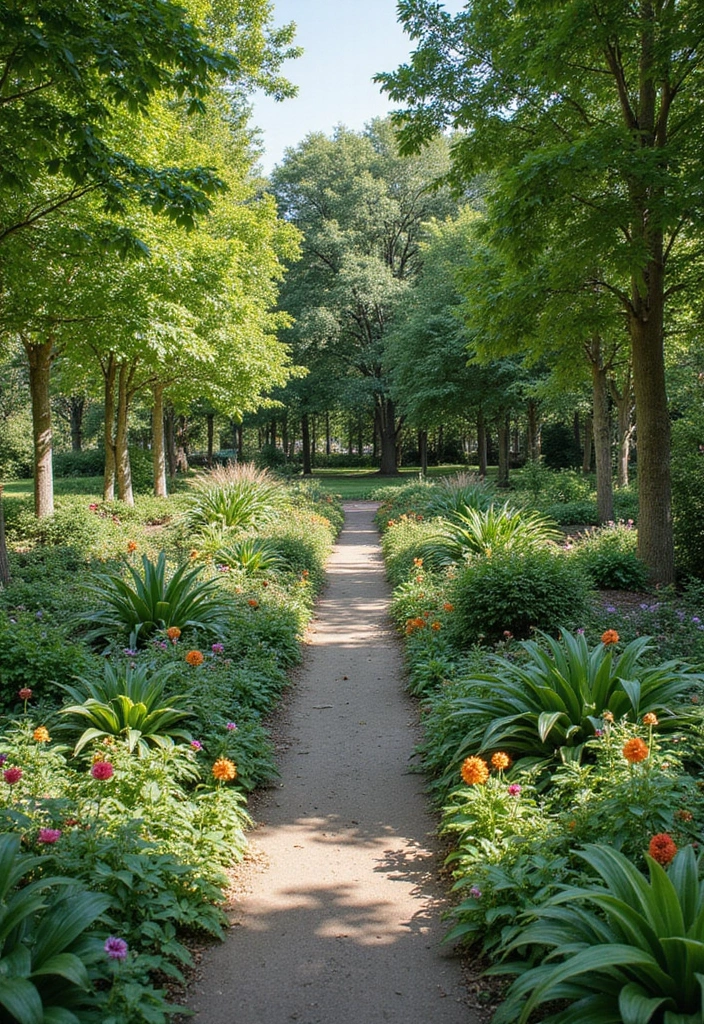
Embracing eco-friendly round garden ideas is a rewarding way to contribute positively to the planet while enhancing your outdoor space.
From community projects to personal retreats, these gardens promote sustainability and creativity.
Explore these concepts, get inspired, and start your own journey towards a greener future. Every little bit helps, and your garden can be a beacon of hope and change!
Frequently Asked Questions
What Are Some Benefits of Creating a Round Garden?
Round gardens offer a unique aesthetic and enhance accessibility! The circular shape promotes easy movement and visibility, making gardening tasks simpler. Additionally, they can create microclimates that support diverse plant life, enhancing your gardening success while also contributing to a more sustainable environment.
Plus, round designs can be visually striking, transforming your outdoor space into a beautiful retreat!
How Can I Start a Sustainable Round Garden on a Budget?
Starting a sustainable round garden doesn’t have to break the bank! Begin by using recycled materials for raised beds or composting stations. Look for native plants that thrive in your area, as they often require less water and maintenance.
Utilizing seeds from established plants or swapping with neighbors can also save money while promoting biodiversity in your garden!
What Plants Work Best for a Circular Herb Garden?
A circular herb garden can be both functional and beautiful! Consider planting a mix of aromatic herbs like basil, thyme, and rosemary, which not only enhance your dishes but also attract beneficial pollinators.
Arranging herbs in a circular layout makes them easy to access while creating a visually appealing design that enhances the overall beauty of your garden space!
How Do Circular Composting Stations Contribute to Eco-Friendly Gardening?
Circular composting stations are a fantastic way to practice sustainability! Their round design allows for efficient aeration, speeding up the composting process and ensuring you get rich, organic compost for your garden.
By recycling kitchen scraps and yard waste, you reduce landfill waste and create nutrient-dense soil, supporting a healthier garden ecosystem!
What Is a Community Round Garden and How Can I Get Involved?
A community round garden is a collaborative space where neighbors come together to grow plants sustainably! These gardens not only promote teamwork but also serve as educational hubs for sustainable gardening practices.
To get involved, reach out to local gardening groups or community centers to find existing projects, or propose starting one in your neighborhood. It’s a wonderful way to meet people while contributing positively to the environment!

